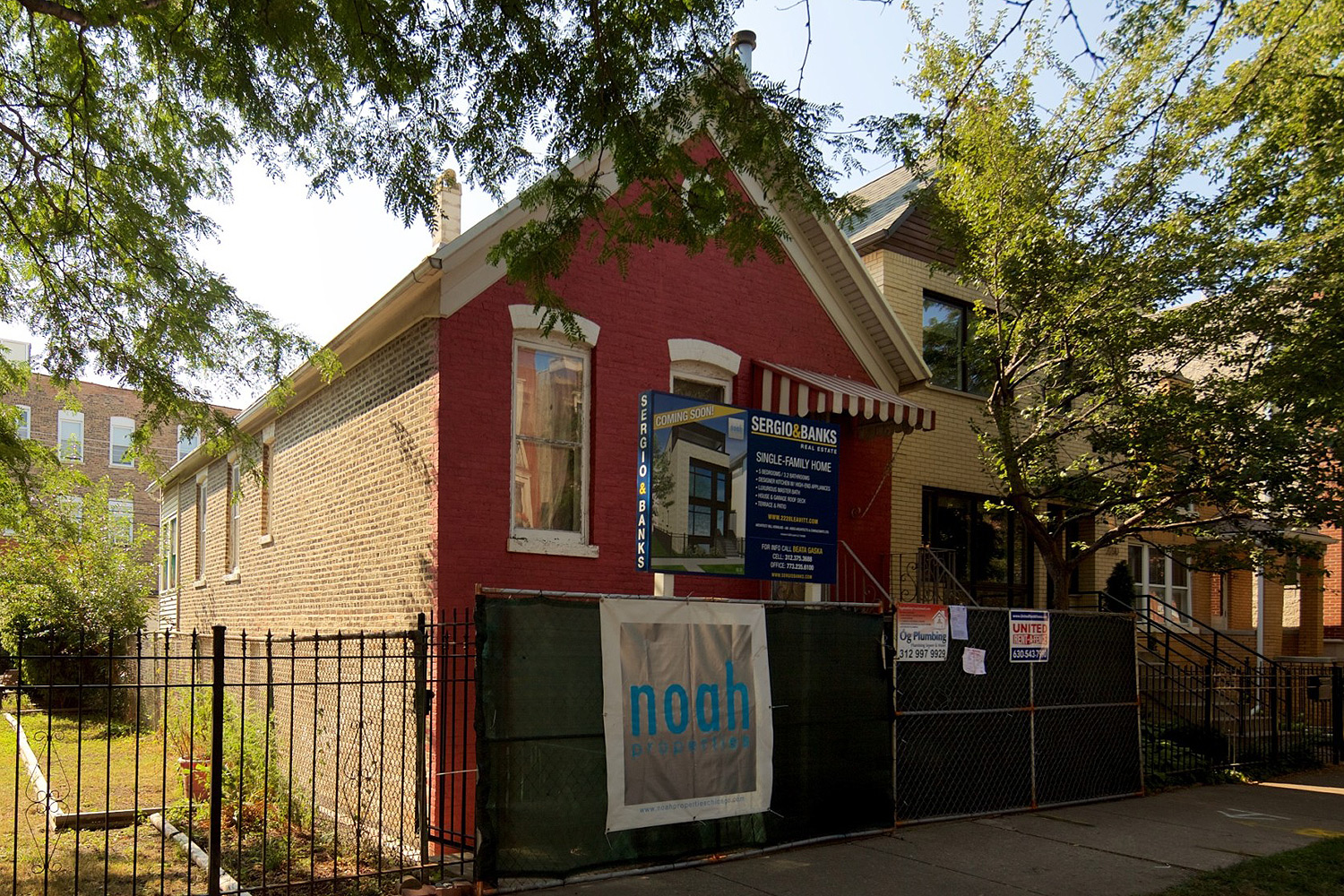As Chicago’s construction boom heads into another spring season, demolition permit data from last year helps to illustrate a clear trend: Neighborhoods on the far ends of the economic spectrum, rich and poor, are seeing the most teardowns. Last year was a significant one for downtown construction with the city, witnessing new records for active construction tower cranes and building permits issued in a 12-month period, but demolition data illustrates a tale of two cities with major implications for their housing stock.
According to figures from Chicago Cityscape, Logan Square saw the highest number of teardowns last year, with 109 demolition permits issued in 2017. The West Town community area, which includes the Wicker Park, Bucktown, Noble Square, and East Village neighborhoods, came in a close second place, with 93 demolition permits issued during the same period. Rounding out the top five were Lincoln Park with 70 demolitions, Englewood with 64, and West Englewood which also saw 64 structures lost. Pinpointing the exact number of housing units lost is more difficult since the city does not publish a building’s unit count in demolition permits, says Chicago Cityscape founder and blogger Steven Vance.
The neighborhoods with the most demolition activity form a noticeable U-shape from the North Side lakefront out towards the northwest side, then far into the South Side, notes Daniel Kay Hertz, Chicago housing policy analyst with the Center for Tax and Budget Accountability and author of an upcoming book on Lincoln Park’s gentrification battle.
That pattern, Hertz suggests, represents patterns of economic periods, particularly the recession and following years.
“The different peaks in the economic cycle are very noticeable,” Hertz says of the figures. “In the lower-income areas, demolitions seem to have peaked in the years after the recession while in the very high-end neighborhoods, demolitions have dropped very dramatically just in the last year or two.”

On the North Side, Logan Square’s demolition numbers have surpassed those in neighboring communities. Both Hertz and Vance suspect that the data shows that builders are moving on from the saturated luxury markets in Lincoln Park and Lakeview to focus on the plentiful supply of cheaper frame buildings in Logan Square for redevelopment.
Demolitions in Englewood and West Englewood appear to be slowing after record numbers of teardowns in the years following the recession. In 2012 alone, the city issued permits to remove 364 structures in the Englewood and West Englewood communities—nearly a quarter of all of the demolition permits issued by the city that year, in alignment with the end of the foreclosure crisis.
High levels of teardown activity also been shown to negatively impact the health of residents through the release of dangerous lead dust and other toxic materials such as asbestos. But the changing appearance of neighborhood blocks also has a deep economic and psychological effect on residents and investors, says architectural historian Elizabeth Blasius.
“When people decide where they want to live, they ask themselves what a neighborhood looks like,” Blasius says. “But demolition is trauma. When buildings are demolished, it’s like a visible wound for a community and oftentimes people see these wounds and read negativity in that.”



